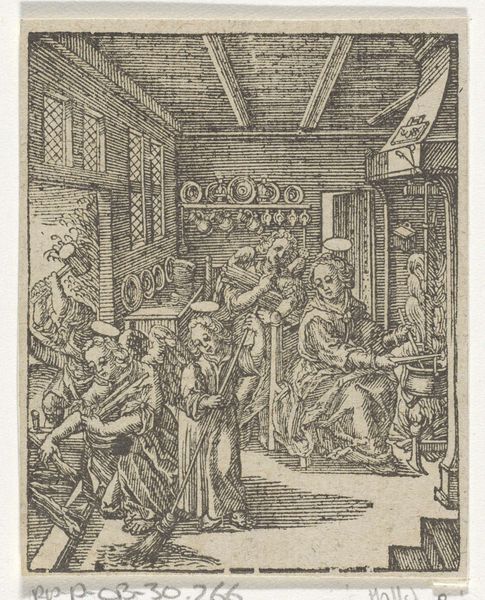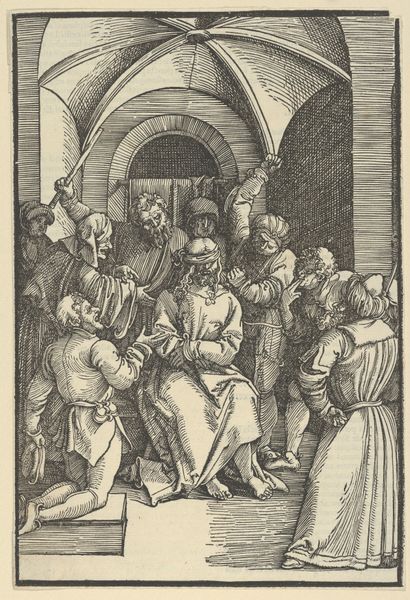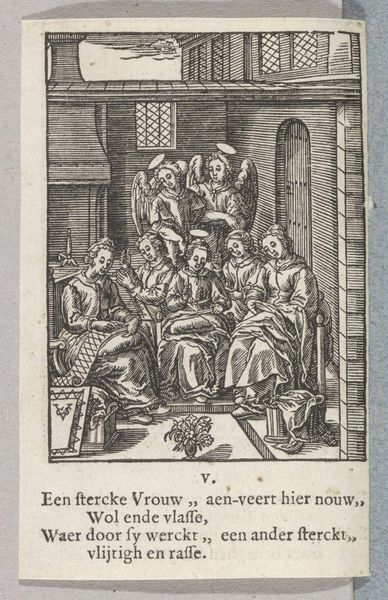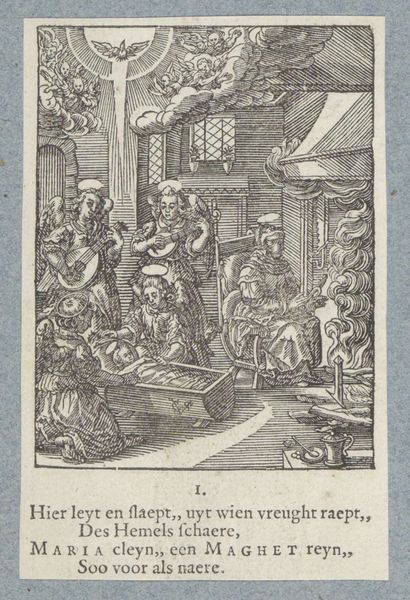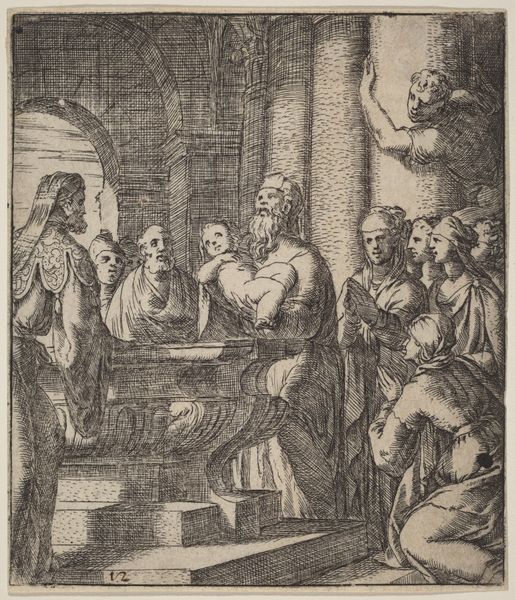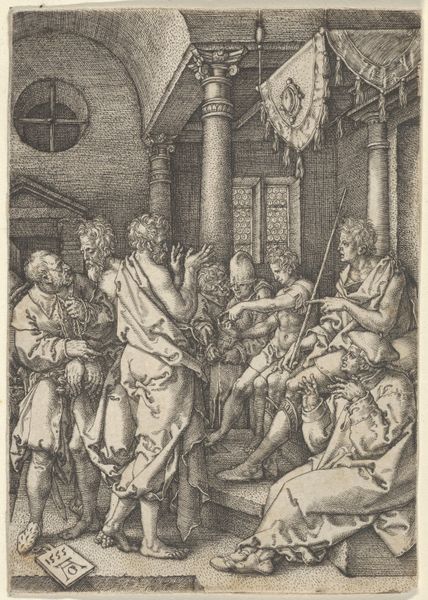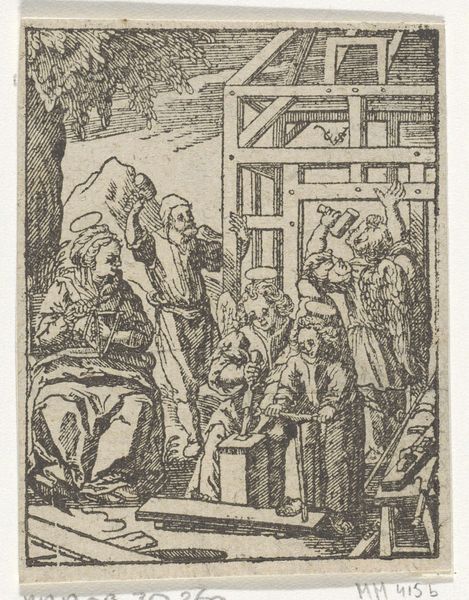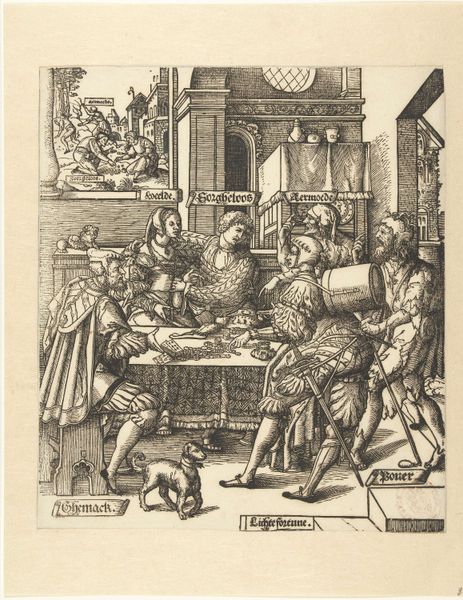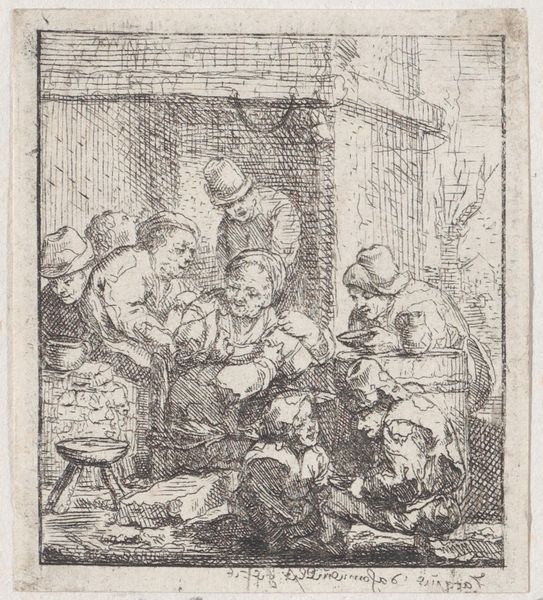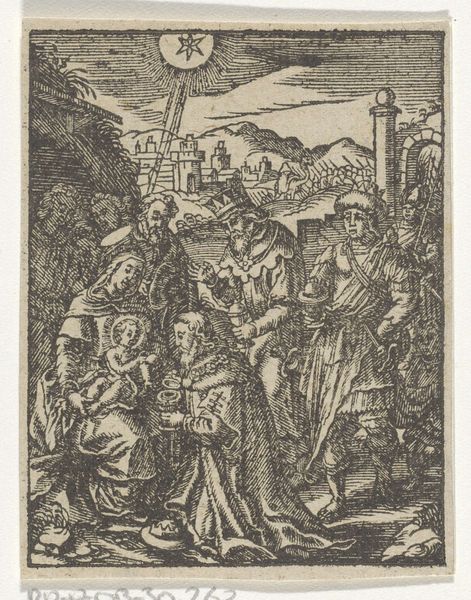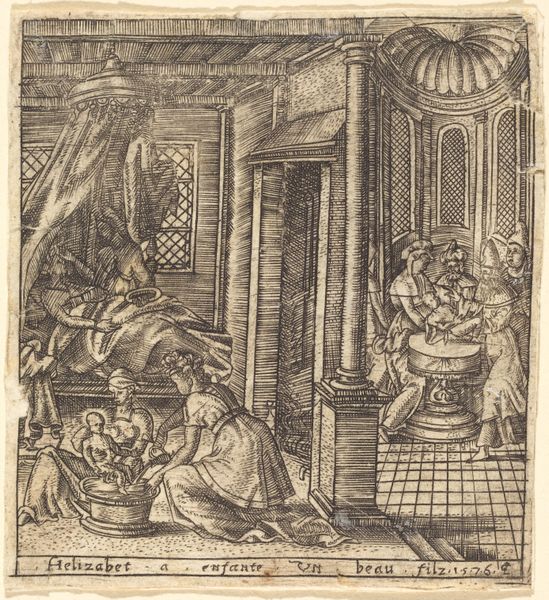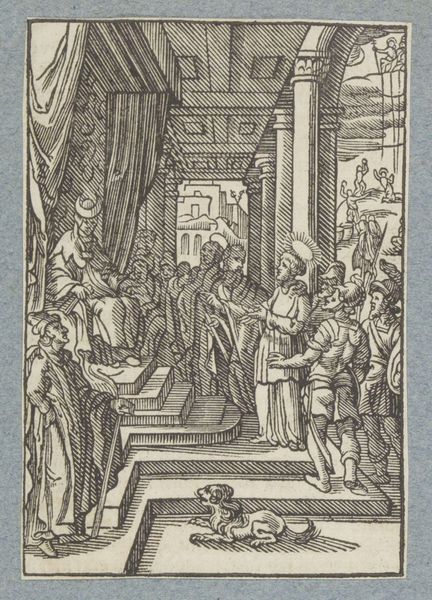
drawing, print, engraving
#
drawing
#
baroque
#
pen drawing
#
mechanical pen drawing
# print
#
pen illustration
#
pen sketch
#
pencil sketch
#
old engraving style
#
figuration
#
personal sketchbook
#
pen-ink sketch
#
line
#
pen work
#
sketchbook drawing
#
genre-painting
#
engraving
Dimensions: height 87 mm, width 65 mm
Copyright: Rijks Museum: Open Domain
Editor: This engraving from 1617-1658, titled "Christuskind tussen bordurende vrouwen" and attributed to Christoffel van (II) Sichem, depicts women, some with halos, engaged in embroidery. There's a very domestic feel to it, almost like a group of women finding solidarity in their craft. What do you see in this piece, especially regarding the portrayal of women and domesticity? Curator: The engraving presents an intriguing lens through which to examine early modern notions of womanhood, labor, and the sacred. Notice how the act of embroidery, a skill traditionally associated with women, is elevated here, almost becoming a devotional act. This raises questions about the intersection of piety, gender roles, and the valorization, or perhaps the restriction, of women's activities in the domestic sphere. What kind of social values might the artist be trying to reflect, or perhaps even critique? Editor: It’s interesting that you mention critique. On the one hand, it looks like the women’s skill and focus are respected, but also there are some hints in the image about their possible restriction to their homes. Curator: Precisely! We have to ask: Is this a celebration of female virtue, or a subtle commentary on the limited opportunities available to women at the time? The presence of the haloed figures—are they angels, or simply pious women idealized? And what does it say that they are engaged in a traditionally feminine art form? Editor: Thinking about it that way, the artwork feels less straightforward. It definitely complicates what I initially thought about its representation of women and their roles. Curator: That’s the power of historical context! By understanding the social and cultural forces at play, we can unearth deeper meanings in even seemingly simple images. It also underlines the importance of examining whose stories are told, and from what perspective. Editor: This has changed how I approach artworks from this era! I am looking more forward to understanding the artists' commentary on gender and society. Curator: Excellent! The beauty of art lies in its ability to spark such crucial dialogues and inspire us to reflect on the complexities of the past and present.
Comments
No comments
Be the first to comment and join the conversation on the ultimate creative platform.

